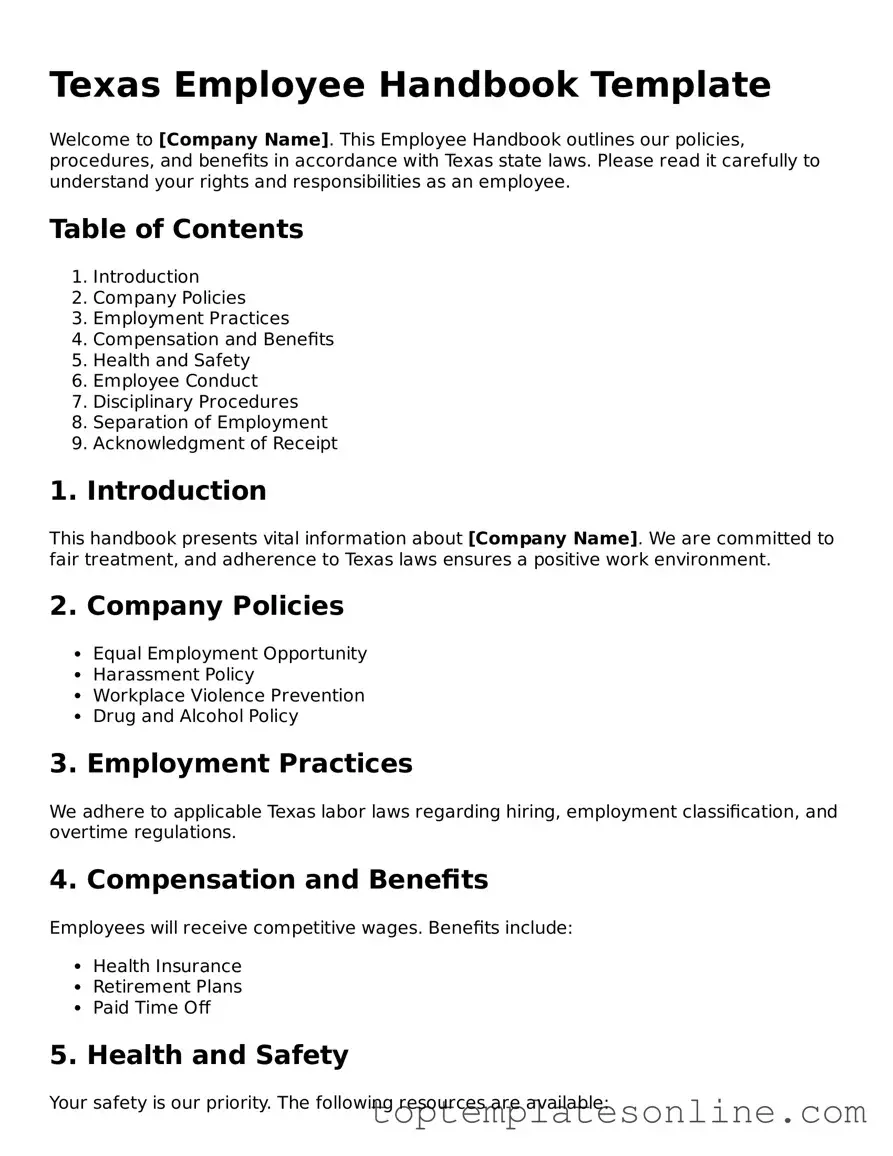Blank Employee Handbook Template for Texas State
The Texas Employee Handbook form serves as a vital resource for employers, outlining workplace policies and expectations. This document not only helps in communicating important information to employees but also fosters a positive work environment. By clearly defining roles, responsibilities, and company culture, the handbook plays a crucial role in promoting understanding and compliance among staff.
Customize Employee Handbook Here
